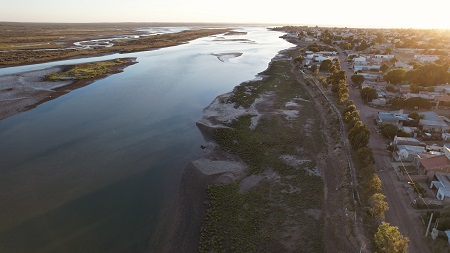New tool helps identify 55 marine protected areas failing to protect marine life
March 27, 2023

March 27, 2023

A new Paper Park Index (PPI) developed by fisheries researchers at the University of British Columbia has helped identify 55 marine protected areas (MPAs) across the world which are protected on paper only.
Most of the ‘paper parks’, or MPAs that fail to protect marine biodiversity, are located in Latin America and the Caribbean, according to the new research published in Marine Policy. Countries such as Venezuela topped the list with more than one national park allowing unregulated fisheries in restricted zones. Southeast Asia, Oceania, and the Indian Ocean are also regions where marine protected areas fail to fulfill their objectives.
“Due to the growing number of MPAs and the expansion of unrealistic and idealistic conservation targets, we believe that more transparent information on the actual protection that they provide to marine ecosystems is necessary,” said Dr. Veronica Relano, lead author of the Marine Policy article that presents the new index. “The PPI exposes the disconnect between official protection status on paper and the perception of fishing intensity reported by different local stakeholders for the 184 marine protected areas we assessed.”
To develop the index, Dr. Relano and co-author Dr. Daniel Pauly, principal investigator of the Sea Around Us at UBC’s Institute for the Oceans and Fisheries, polled more than 3,000 people considered stakeholders within their sample, which included at least one marine protected area for each coastal country in the world.
Fishers, NGO staffers, civil servants, academics and journalists were emailed a single-question survey asking them to rate the level of fishing they thought occurred in a specific MPA in their country’s waters. The average answer for each MPA, ranging from one, or ‘no fishing, to four, or ‘very intense fishing,’ was then matched with the International Union for Conservation of Nature’s (IUCN) categories for MPAs. These span from strictly protected areas to parks where conservation objectives are pursued in parallel to other human uses.
“In other words, the Paper Park Index is the difference between the average fishing intensity indicated in the responses to our questionnaire and the IUCN category level. We also compared our results to the level of protection listed in the Marine Protection Atlas,” Dr. Pauly said. “For example, if most respondents indicated ‘moderate’ or ‘very intense fishing’ for an MPA officially designated as ‘no-take’ or ‘no fishing allowed,’ we might be dealing with a ‘paper park’ or a misfunctioning MPA that is at risk of being a ‘paper park,’ depending on the PPI scale.”
The authors noted that there are no other MPA databases that consider local stakeholders’ knowledge in their assessment of protection levels. “This needs to change. Our research shows how considering local perceptions could help to differentiate de facto MPAs from paper parks,” Dr. Relano said.
Previous research by Dr. Pauly has shown that fishing is, by far, the most important anthropogenic impact on marine biodiversity. This is why the index was developed focusing solely on this activity and doesn’t consider climate change, pollution and other threats to marine life.
“This study serves as a useful entry point for further investigation into how much and in which way our oceans are protected,” Dr. Pauly said. “Future research should match our results with quantitative fisheries data to either support the findings or aid the identification of blind spots in official fishery statistics.”
We honour xwməθkwəy̓ əm (Musqueam) on whose ancestral, unceded territory UBC Vancouver is situated. UBC Science is committed to building meaningful relationships with Indigenous peoples so we can advance Reconciliation and ensure traditional ways of knowing enrich our teaching and research.
Learn more: Musqueam First Nation